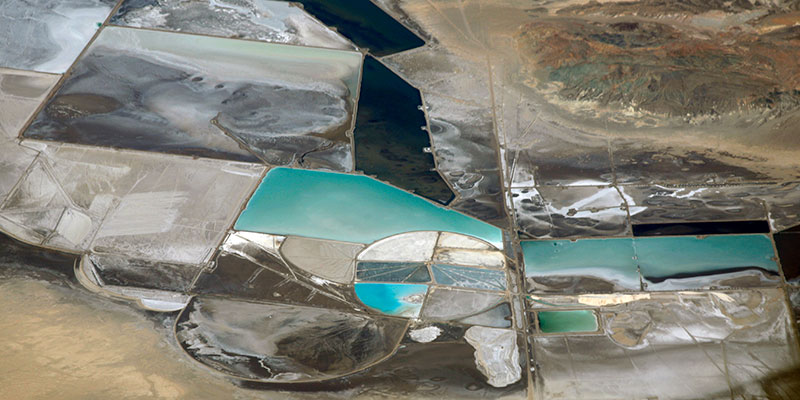Open evaporation ponds, like these at a lithium mine, are often used to concentrate lithium in wastewater.
New membrane process could be a game-changer in lithium extraction efficiency
Lithium-ion batteries power a wide variety of electronic devices, including mobile phones, laptops, and even electric vehicles, which could account for 60% of new auto sales by 2030. So, they will likely play an important role in the reduction of dependence on fossil fuels.
Unfortunately, lithium mining can have serious environmental impacts, and the production of lithium-ion batteries requires a great deal of the element. The Tesla Model S battery, for instance, contains approximately 12 kg of lithium.
Scientists looking for new ways to source lithium, though, have discovered a promising new membrane material that could help recover lithium from mining and fracking wastewater, improving water quality while producing a revenue stream.
Membrane processes have been used to extract lithium from aqueous sources for some time, but the membranes currently in use have usually shown low ion-specific selectivity. An estimated 58% of the world’s known lithium reserves exist in brines, with South America leading production. Solar evaporation, the process currently used there, can take a year.
Improved Lithium Extraction
To improve efficiency, researchers have collaborated in the discovery of a new method of lithium extraction from wastewater. The scientists involved come from the University of Texas at Austin, the Chinese Academy of Sciences, and Monash University and the Commonwealth Scientific and Industrial Research Organisation (CSIRO) in Australia.
The process uses a metal-organic framework membrane made out of a novel material with the largest internal surface area ever observed in a substance. The membrane mimics biological cell membrane filtering as it efficiently removes metal ions from water. The researchers hope the new technique will help lower lithium prices. Anita Hill, a scientist involved in the research, explained:
The prospect of using metal-organic frameworks for sustainable water filtration is incredibly exciting from a public-good perspective, while delivering a better way of extracting lithium ions to meet global demand could create new industries.
The technique may be adaptable to fracking wastewater. For example, the Barnett and Eagle Ford shales in Texas contain a great deal of lithium and have been envisioned as an ideal ground for proving the technology. Each well in the shales can create as much as 300,000 gallons of produced wastewater weekly. Conservatively, enough lithium for 200 electric cars or 1.6 million smartphones could be recovered weekly from each well, making fracking more sustainable.
Implications for Desalination
The discovery may also improve reverse osmosis (RO) desalination membranes. While current RO membranes remove ions indiscriminately, the newly discovered membrane removes only selected ions as they pass through for a potentially more cost-effective process.
As research and development proceed, membrane water and wastewater treatment technologies that are already available can improve water efficiency and bring mining, and oil and gas operations into compliance with regulations. Fluence’s NIROBOX™ RO units and Aspiral™ wastewater treatment units are packaged to serve in remote environments such as mines and fracking plays.
Fluence is active in the mining and oil and gas sectors, as well as remote workforce housing. Contact our experts to help identify opportunities at your site anywhere in the world.

